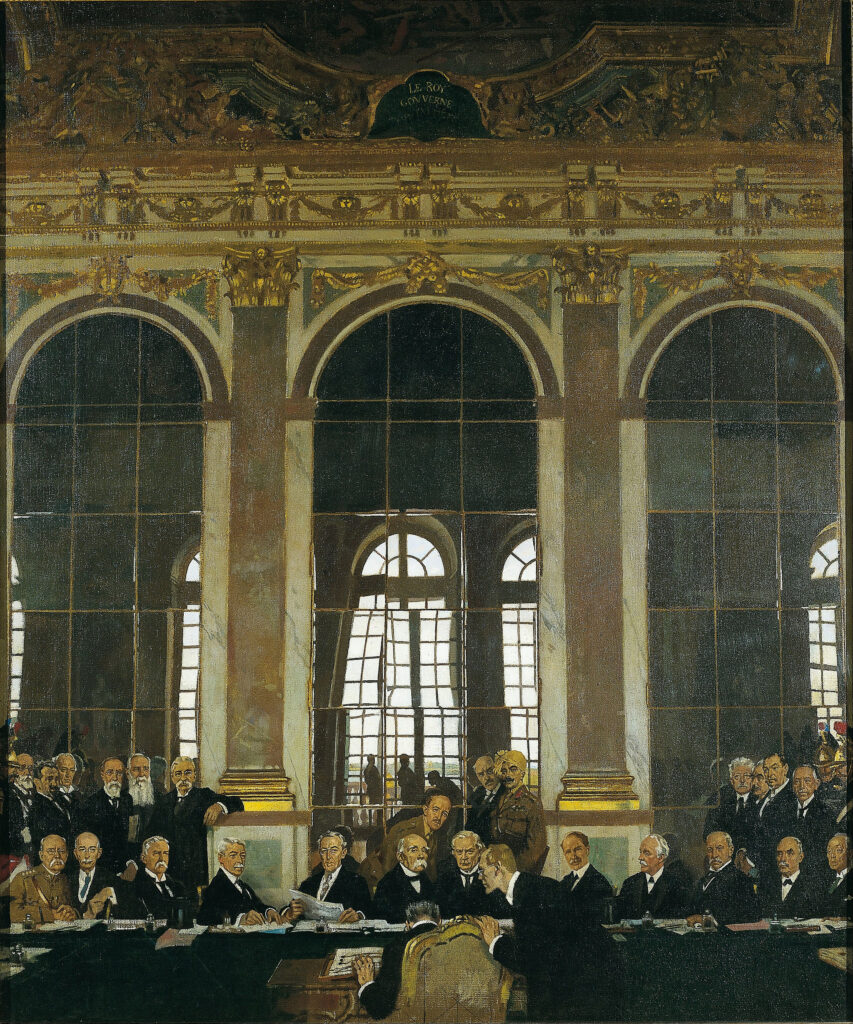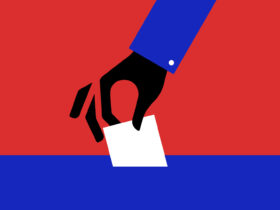Coalitions, infighting, rinse, repeat. Italy is no stranger to leadership changes. Over the past 80 years, it’s undergone 70 different governments and has had a profound history of political instability. On Sept. 25, the country headed to the polls six months before their scheduled election cycle to decide who would pick up the mantle for the 71st time. After a vote of no confidence against the technical government coalition led by Mario Draghi led to the Prime Minister’s resignation, Georgie Meloni is the next Parliamentary leader.
This election saw the right leading in a way it’s never seen before, marked as clear winners in both houses of Parliament. Heading this coalition is the party Brothers of Italy, which reached only 4% of public support in 2018 but became the 2022 political force. This movement marks a new momentum for the Italian far right, but to understand how it happened, it is key to look at the history of Italy’s political landscape. Once doing so, it’s clear the movement is part of a larger pattern that’s been growing since post-World War II and suggests Italy might be entering a new phase of politics.
The beginning of the modern Italian political system dates back to 1947, when through a Constitutional referendum it became a republic. Under this new system, the nation set up a parliamentary system, with the prime minister acting as head of government and the president as head of state. The prime minister is selected by a majority of Parliament, composed of Il Senato (Senate) and Camera dei Deputati (House of Representatives). Parliamentary elections happening every five years in a vast multi-party system means gaining power as an Italian political party is difficult and all about creating and merging coalitions to reach the majority threshold.
This initial post-war period sees the creation of five main political parties but a time of centrist dominance. The Christian Democratic party coalition ruling generally uninterrupted under a period of national unity. Despite the party’s prominence, infighting leads to quick Prime minister changes, most Prime Ministers serving one to two-year terms. It stays in power until the fateful year of 1992.
1992 is the year of the “Mani Pulite” (Clean Hands) scandal when a judicial investigation led by uncovers massive political corruption. What became known as Tangentopoli, resulted in a bribery scandal involving all Italian political parties. The scandal saw the end of what became known as Italy’s first republic. All the major parties dissolved, losing credibility in the eyes of the people and were reborn into Italy’s next political arena.
The restructuring is when Italy sees the introduction of technocratic governments. During a period of national emergency and disconnection, the parties formed a broad coalition around a cabinet of non-political experts to help stabilize the state. At the time, the role was filled by Carlo Azeglio Campi. The presence of technocratic leaders in times of party conflict has continued till today and is often used controversially when parties disagree.
At the same time, after the hit of the scandal, Silvio Berlusconi, a business entrepreneur from Milan, founded a new right party called Forza Italia. Berlusconi’s coalition gained rapid speed and won him the role of prime minister the same year as its founding. During the late 90s and early 2000s, an rimpasto (reshuffling) system grew within the country, where parties within coalitions made the government fall to reorganize the cabinet and gain more influence. However, despite shifts of power between the left and right, the defining figure for Italy during this time remained Berlusconi. Serving over four terms as Prime Minister, he became the longest of any in the nation’s history and cemented the return of the conservative right into mainstream politics.
Then, 2011 saw Italy hit by the Eurozone debt crisis. Along with impending inflation, Berlusconi is charged with multiple criminal charges; stemming from tax evasion, violation of anti-trust laws, bribery and sex scandals. Shaking support, Berlusconi and Forza Italia lost broad public support but remain involved in Italy’s political landscape to this day. Berlusconi’s Forza Italia is part of the winning coalition in 2022.
The fall of Berlusconi led to the establishment of the Monti technical government. The 2010s see power shifting to the center-left Italian Democratic Party (PD). Nevertheless, PD rule is plagued by political gridlock. The constant infighting and a continuing decline in socioeconomic conditions left people looking for a new political entity to shake up the system.
Enter Beppe Grillo, comedian turned politician. He founded the Five Star party, an anti-establishment populist party that gained major youth support and spoke to the politically discontented body of Italy. The party sees moderate gains until 2018 when it reaches 32% of the popular vote in the Parliamentary election. Despite a large public following, the hung election results in no party reaching a majority of the votes that year and Giuseppe Conte, a lawyer with connections to the Five stars, gets proposed as Prime Minister in a makeshift coalition created between the Five Star party and Lega Nord. Lega Nord is a right-wing party present in Italian politics since the 1980s, but that saw a resurgence of influence after the fall of Berlusconi and the 2013 immigration crisis. Headed by the controversial Matteo Salvini, a far-right politician with heavy anti-immigration and European sentiments, the respective leaders of both parties become deputy prime ministers until the Lega’s withdrawal of support in 2019. The Lega is the Brother’s of Italy’s partner in 2022 and speaks to the methodic rise of the right in recent years.
After the presence of three Conte governments, the COVID-19 pandemic is underway,and Italy is one of the most heavily affected countries. Italy’s government faces heavy pressures during 2020, a decentralized time in politics with no clear frontrunner. A new broadband coalition forms between all the country’s major parties to appoint Draghi, the former head of the European Union central bank, as prime minister. The coalition passes, with only one party abstaining-Brothers of Italy.
Founded in 2012 Brothers of Italy is a far-right political party dominated by Georgia Meloni. It arose from the fall of the Alleanza Sociale or National Alliance party; which evolved from Mussolini’s Italian Social Movement (MSI). Despite current claims, the party has a long history of far-right stances, operating under the platform of God, homeland and family. Meloni has worked over this past election cycle to present a pro-Nato and European Union platform to garner broader public support. However, the party has strong fascist ties.
The current election occurred after the fall of Draghi, started in July following a vote of no confidence. After debates over the European Union COVID-19 bailout funds and the Five Star’s refusal to send more arms to Ukraine, the coalition fell apart. Draghi resigned and the President, Sergio Mattarella, dissolved Parliament. The country led back to the voting booth.
The period of turmoil marked after the 2018 election sees the continuing trends of disarray and party competition sprawled onto the race for Prime Minister. After Draghi’s fall, the Five Star party lost popular support and fractured, trailing in third place in the 2022 election. The People’s Democratic Party, second in the polls, has also fractured, with previous party leader and Prime Minister Matteo Renzi creating a runoff party Viva Italia (Go Italy). Disagreement and criticism have left the public hopeless and disillusioned with the old political parties. Hence why Brothers of Italy, the only party that stood its ground in the 2020 government crisis and who draws towards an “Italy first platform,” spoke to the underbelly of the country.
A Brother’s of Italy win sees several consequences and concerns for the country. Meloni has publicly pursued several anti-LGBTQIA+ policies and expressed refusal for mass immigration. She’s platformed for far-right parties such as Vox in Spain and was a member of the youth MSI movement. With over 5 million immigrants and refugees arriving in Italy each year, and the country in the middle of an energy shortage with exceedingly high electricity bills, the right coalition will have to deal with how the country will respond to essential social and economic questions.
With a projected low voting turnout this election cycle, political parties in Italy are more divided than they’ve ever been since the 1990s, and crises, economic struggles, and technical governments have led the population to doubt politicians’ efficiency and capabilities, turning to the only party they’ve not tried before — the Brothers of Italy. The party seems to have publicly toned down its Euroskeptive rhetoric and placated to hone in on the people’s frustrations and anger against the government. However, Italy headed into the election marked by the rise and reorganization of its political parties. The rise of Brothers of Italy opens the door for an ominous shift in the nation, showing that Italy is on the arrival of a Third Republic. A Third Republic marked by the resurgence of the far-right.







